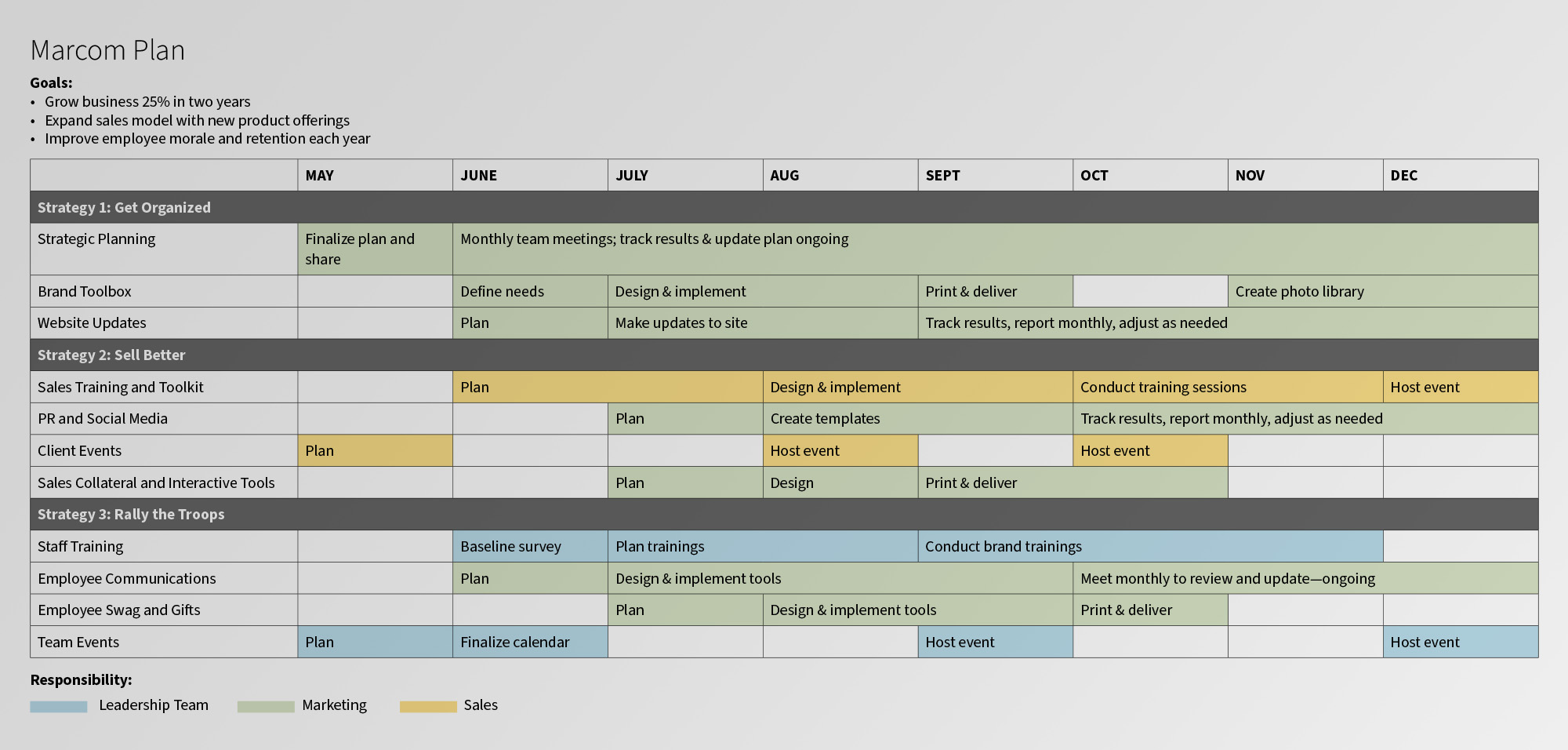How to Create a Usable Marketing Plan
Keep it simple and get it done.

When it comes to figuring out your marketing strategy and trying to create a practical plan it’s easy to get overwhelmed. Most organizations have multiple goals, various audiences, and limited resources.
Where do you start, what should you do, and how do you know if it’s working? Don’t panic. Here’s a simple three-step process to help you get focused, build internal collaboration, and create a usable marketing plan that will move you ahead.
Step I: Prepare
Before you gather everyone into a room to hash out ideas, make sure you’ve prepared for the process. Start by identifying who should be involved. Internal experts from different key business functions, such as sales, HR, operations, and marketing, can provide valuable insights. You may also want to consider hiring an external expert to guide you through the process, especially if your team is big or unfamiliar with generating a marketing strategy.
Once you’ve established your team, gather up any available audience research, outcomes from the current and past years, and details about sales, operational, or other business goals. Take time to explore the competitive landscape to gain a fresh perspective of your marketplace. And assign your team with some pre-work. A few simple questions and exercises will allow everyone to begin the creative process on an individual level and come to the first strategy session with a framework of ideas on which to build—making the process more productive.
Step II: Create
Once you’re prepared, it’s time to conduct an ideation session (or series of sessions if needed) with your team to confirm objectives and think creatively about how to get the results you desire. Start by listing out your goals (big picture and specific), reporting on your homework assignments and marketplace evaluations, and gaining consensus about what you need your marketing strategy to accomplish. Answer the basic who, what, when, and why questions—who do you need to reach, what do you need to tell them, when does it need to happen, and why should they care? Include details about available marketing resources for the coming year (people and dollars).
Once you’ve agreed upon your goals and objectives, take time to think creatively with a series of brainstorming techniques. Be sure to include individual and small group activities that encourage participation from everyone. Document all of your ideas, big and small. As the session progresses, narrow your focus and identify the strategies with the most potential and/or the ones that are realistic to accomplish.
When you have agreement on your final list of strategies, list out the specific action steps needed to accomplish the ideas. Be sure to include details about who on your team will be responsible for each action step, when it will need to be completed, and how you will track results.
Step III: Share
Now it’s time to make the plan a reality, but that doesn’t mean creating 20-page report. In fact, a simple document is often the best way to keep your team focused. State your goals and objectives with clear, measurable language. List your identified strategies along with the tactics that align with each and include your action plan with a timeline and the team member responsibilities.
Here’s an example of an action plan that identifies specific strategies, tactics, responsibilities, and a timeline in a simple, but visual manner.

Make sure you plan for scheduled check-ins with your key team. This will help keep everyone energized while providing opportunities to evaluate and adjust the plan throughout the year as things change in your market and organization.
Going through a strategic planning process can be valuable for any organization. Not only will it give you a roadmap for getting to where you want to go, it will also create consensus and accountability for making it happen.
Get More Than Ideas
Build consensus, strengthen culture, and create ownership through the process of brainstorming.
Learning from Others
Five steps to discover fresh ideas by looking outside your industry
When Do You Need to Rebrand?
A few clues to let you know when it’s time to refresh your brand.



